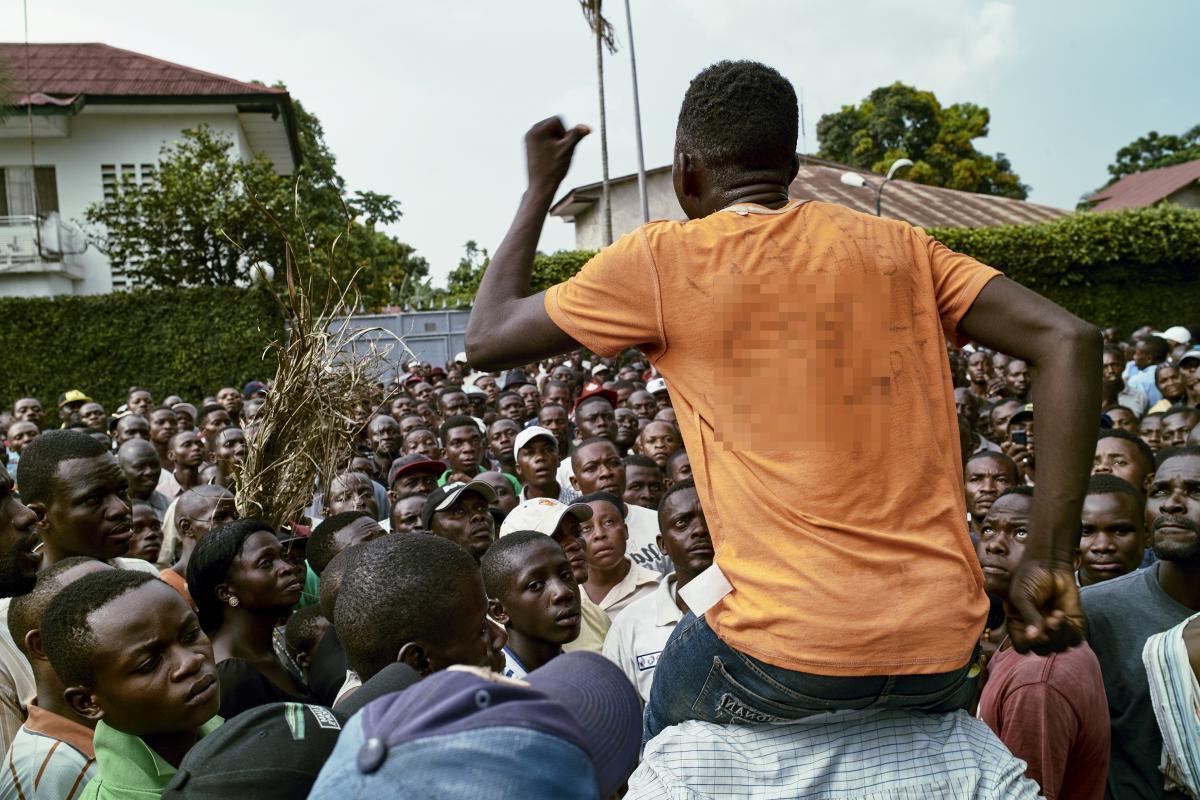
The Kamwina Nsapu Rebellion is a significant yet often overlooked conflict in the Democratic Republic of Congo. This rebellion, which began in 2016, saw local militias clashing with government forces, leading to widespread violence and displacement. Kamwina Nsapu, a traditional chief, sparked the uprising after his death, which his followers believed was unjust. The rebellion highlights the complex interplay of local traditions, political power struggles, and the impact on civilians. Understanding this conflict requires delving into its roots, key events, and the ongoing humanitarian crisis. Here are 30 essential facts to help you grasp the full picture of the Kamwina Nsapu Rebellion.
Key Takeaways:
- The Kamwina Nsapu Rebellion began over a local chief's dispute and escalated into a devastating conflict, causing widespread violence and displacement in the Democratic Republic of Congo.
- The rebellion led to a severe humanitarian crisis, international condemnation, and efforts for peace, highlighting the need for reforms and ongoing support in the Kasai region.
Origins of the Kamwina Nsapu Rebellion
The Kamwina Nsapu Rebellion is a significant event in the Democratic Republic of Congo's recent history. It began as a local conflict but quickly escalated into a larger crisis.
- The rebellion started in 2016 in the Kasai region of the Democratic Republic of Congo.
- Kamwina Nsapu was the title of a local chief, Jean-Pierre Mpandi, who led the uprising.
- The conflict began after the government refused to recognize Mpandi as the legitimate chief.
- Mpandi's followers believed he had supernatural powers and could protect them from harm.
- The rebellion was fueled by long-standing grievances over land rights and local governance.
Key Events in the Rebellion
Several pivotal moments defined the course of the Kamwina Nsapu Rebellion. These events drew international attention and highlighted the severity of the conflict.
- In August 2016, Jean-Pierre Mpandi was killed by government forces, sparking widespread violence.
- Following Mpandi's death, his followers launched attacks on government buildings and officials.
- The violence quickly spread to neighboring provinces, affecting thousands of civilians.
- In March 2017, two United Nations experts were killed while investigating human rights abuses in the region.
- By mid-2017, the conflict had displaced over 1.4 million people.
Humanitarian Impact
The rebellion had a devastating impact on the local population, leading to a severe humanitarian crisis.
- Thousands of people were killed during the conflict, including many women and children.
- The violence led to widespread destruction of homes, schools, and hospitals.
- Many children were recruited as soldiers by both the rebels and government forces.
- The conflict disrupted agricultural activities, leading to food shortages and malnutrition.
- Humanitarian organizations faced significant challenges in delivering aid due to the ongoing violence.
International Response
The international community responded to the Kamwina Nsapu Rebellion with a mix of condemnation and humanitarian assistance.
- The United Nations condemned the violence and called for an immediate ceasefire.
- Several countries, including the United States and France, provided humanitarian aid to the affected regions.
- The International Criminal Court opened an investigation into alleged war crimes committed during the conflict.
- Human rights organizations documented numerous cases of extrajudicial killings and torture.
- The African Union called for dialogue between the government and rebel leaders to resolve the conflict.
Efforts Toward Peace
Despite the challenges, there have been efforts to bring peace and stability to the Kasai region.
- In 2017, the Congolese government initiated peace talks with some rebel factions.
- Local leaders and community groups have played a crucial role in mediating conflicts and promoting reconciliation.
- Several disarmament and reintegration programs have been launched to help former combatants return to civilian life.
- International organizations have supported efforts to rebuild infrastructure and provide essential services.
- Education and vocational training programs have been established to support the youth affected by the conflict.
Long-term Consequences
The Kamwina Nsapu Rebellion has had lasting effects on the Democratic Republic of Congo and its people.
- The conflict has deepened ethnic and political divisions in the Kasai region.
- Many displaced people have been unable to return to their homes due to ongoing insecurity.
- The rebellion has highlighted the need for comprehensive reforms in local governance and land rights.
- The international community continues to monitor the situation and provide support for recovery efforts.
- The legacy of the rebellion serves as a reminder of the importance of addressing underlying grievances to prevent future conflicts.
Final Thoughts on Kamwina Nsapu Rebellion
The Kamwina Nsapu Rebellion stands as a stark reminder of the complexities within the Democratic Republic of Congo. From its roots in local chieftaincy disputes to its escalation into a broader conflict, this rebellion has had significant impacts on both the region and its people. Understanding the key events, major players, and underlying causes helps shed light on the challenges faced by the DRC. The rebellion underscores the importance of addressing local grievances and the need for effective governance to prevent such conflicts. As we reflect on these facts, it becomes clear that peace and stability in the region require a multifaceted approach, involving both local and international efforts. The Kamwina Nsapu Rebellion is a chapter in the DRC's history that continues to influence its present and future.
Frequently Asked Questions
Was this page helpful?
Our commitment to delivering trustworthy and engaging content is at the heart of what we do. Each fact on our site is contributed by real users like you, bringing a wealth of diverse insights and information. To ensure the highest standards of accuracy and reliability, our dedicated editors meticulously review each submission. This process guarantees that the facts we share are not only fascinating but also credible. Trust in our commitment to quality and authenticity as you explore and learn with us.
